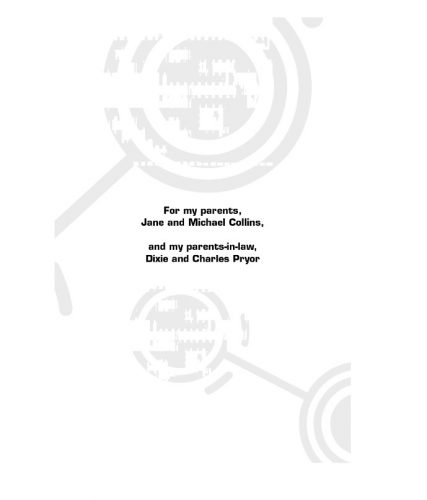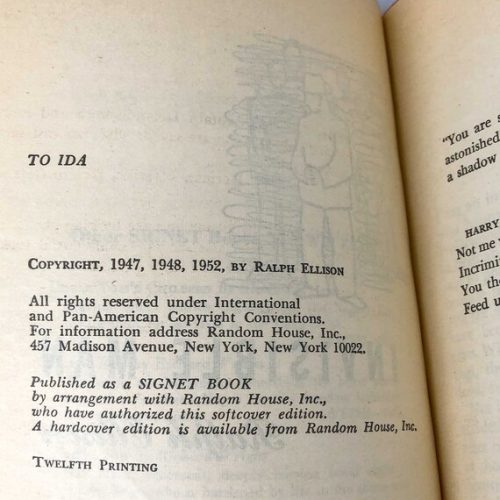
Books are a profound manifestation of a writer’s soul, resonating with the subtle nuances of their mind and heart. Hidden within the many layers of a book’s journey lies a small yet powerful component that bears a special emotional weight – the book’s dedication.
A book dedication, typically found in the initial pages, is a personal note from the author. It serves as an intimate platform to pay homage, express gratitude, or acknowledge the influence of someone in their life or writing process. It’s a small window into the author’s world, often showcasing a meaningful relationship, an inspiring individual, or even a pet or place that holds significance in the author’s life.
While dedications add a touch of personalization, it’s crucial to understand that they are not obligatory. No strict rules or literary guidelines compel writers to include dedication in their books. It is a personal choice, an author’s creative prerogative. If chosen, it becomes a unique space to spotlight the personal connections and emotional bonds that have been part of the author’s journey to publication.
Difference between Acknowledgment and Dedication: A Closer Look
Despite both serving as avenues for personal expression within a book, there’s a noteworthy distinction between dedication and acknowledgment.
A book dedication is concise, usually just a sentence or two, directed towards one or a few individuals, or sometimes an abstract entity like an idea or a place. It’s a writer’s way of saying, “This book is for you.” An example could be: “To Emma, my muse and my strength.”
In contrast, the acknowledgment section provides the author with a broader scope to express gratitude. It typically includes a list of people who have contributed to the author’s journey in creating the book, directly or indirectly. This section is often more detailed, extending several paragraphs or pages. It may include mentions of editors, publishers, friends, family, mentors, or anyone else who has played a significant role. An example could be: “I would like to express my deepest gratitude to my editor, James, for his patience and guidance. Also, to my family for their unwavering support throughout the writing process…”
Understanding the difference between acknowledgment and dedication helps one appreciate the diverse ways authors express their gratitude, respect, and love within their work.
How to Write a Book Dedication: A Guided Approach
The act of creating a book dedication extends beyond the realm of emotions and personal ties. It’s a balance between sentimentality and professionalism. The journey is complete when the heartfelt words are perfectly encapsulated in an appropriate format and position, ready to greet every reader who opens your book.
Thus, crafting a book dedication is a one-of-a-kind opportunity to pay tribute to someone who has been instrumental in your life or writing journey. How can you make it truly special? Check out these simple steps to help guide you on your journey to creating a memorable book dedication:
Make a List
The first step in penning a book dedication is to identify those you wish to acknowledge. This could be anyone who has been influential or supportive during your writing process. It could be a mentor, a family member, a friend, or even a group of people like your readers or a community you belong to. Creating a list provides a comprehensive overview of all potential dedicatees.
Brainstorm Example Dedications
When brainstorming example dedications, consider your memorable events and deep-seated emotions related to your book. Reflect on the journey that led to the book’s creation. Is there a person or a moment that stands out? Begin drafting dedications based on these thoughts, experimenting with tone and style. You can make them serious, humorous, cryptic, or direct. Create multiple versions and read them aloud. The dedications that resonate the most with you — that stir your emotions and capture the spirit of your journey — are the ones to consider for your final choice.
Consider Your Relationship
This refers to the connection between you and the person you’re dedicating your book to. The nature of this relationship can significantly influence the tone and content of your dedication. For example, a dedication to a spouse might be deeply personal and affectionate, while one to a mentor could highlight their role in your professional development.
Choose Your Dedication
Choosing your dedication can be a deeply personal process. Begin by reflecting on who or what has significantly influenced your writing journey. This could be a person, a group, a pet, or even an abstract concept. Think about the impact they’ve had on your life or your work. Remember, the beauty of a book’s dedication lies in its personal and emotional resonance. Whether it’s a mentor who guided you, a family member who supported you, or a unique concept that inspired you, let your dedication echo the depth of their contribution.
Make It Personal
A book dedication is a personal note from you as an author. It’s an opportunity to share a piece of your heart with your readers. Feel free to make it cryptic or straightforward based on your relationship with the dedicatee. Remember, it’s your tribute, it can be as personal or as enigmatic as you wish. For instance, “For M, who found the stars in my darkness.”
Review and Revise
A critical part of any writing process, reviewing and revising your dedication ensures that it communicates your feelings accurately and effectively. Read it out loud, share it with a trusted friend, and ensure it sounds and feels right. This step will help you fine-tune the dedication and fix any errors or awkward phrasing.
Finalize and Format
Once your dedication is written and refined to your satisfaction, it’s time to consider the finer technical details. The finalization of your dedication involves conforming to the book’s typography, layout, and stylistic norms. It’s important that your dedication doesn’t stick out for the wrong reasons. Therefore, ensure it matches the book’s formatting, i.e. font, type size, and overall aesthetic. This step might seem minor, but it is key to maintaining your publication’s professional look and feel. Consult your publisher’s guidelines or your designer to ensure you’re in line with industry standards.
Place It in Your Book
The placement of your dedication holds symbolic and traditional importance. Typically, the dedication is located after the copyright page and before the table of contents. Its early position offers readers an intimate glimpse into the author’s world right from the beginning. This placement also subtly implies the importance the author places on the dedicatee, as they are one of the first elements the reader encounters. Once your dedication is correctly formatted, ensure it’s accurately positioned within your book.
Book Dedication Page Examples: Showcasing the Spectrum of Sentiments
Dedications come in various shapes and sizes, reflecting the diverse personalities of authors and the breadth of their emotional connections. Here are a few examples that illustrate the versatility and charm of book dedications:
Named Dedications

These are the most straightforward and common types of book dedications. In J.K. Rowling’s “Harry Potter and the Deathly Hallows,” the final book in the iconic Harry Potter series, the dedication page is a tribute not just to a single person but to her diverse readership.
The dedication reads: “The dedication of this book is split seven ways: To Neil, to Jessica, to David, to Kenzie, to Di, to Anne, and to you, if you have stuck with Harry until the very end.”
The dedication’s structure is a nod to the central theme of the book, with the number seven playing a crucial role in the narrative. Each person listed played a significant role in Rowling’s life or the creation of the Harry Potter series. The final part of the dedication, addressed to the loyal audience, is particularly touching.
This dedication, nestled in the initial pages of the hardbound tome, is printed in the same familiar font that readers have grown accustomed to over the series. It acknowledges the journey that readers have embarked on with Harry, thus making it a fitting introduction to the epic conclusion of this beloved saga.
Funny Dedications

A funny dedication serves to entertain the reader while shedding light on the author’s sense of humor. Let’s look at Rick Riordan’s dedication page in “The House of Hades”, the fourth book in the Heroes of Olympus series.
The dedication reads: “To my wonderful readers: Sorry about that last cliff-hanger. Well, no, not really. HAHAHAHA. But seriously, I love you guys.”
Riordan’s humorous and playful nature is on full display in this dedication. His casual and irreverent tone is perfectly in keeping with his writing style, known for its wit and humor. He manages to both apologize for and take delight in the cliff-hanger ending of the previous book, acknowledging the impact it had on his readers while promising further thrills to come.
This dedication, set against the white canvas of the first page in simple, clear font, sets the tone for the roller coaster ride that readers are about to embark upon. It reminds us that despite the dramatic ups and downs in his stories, Riordan never loses his sense of fun.
In a series characterized by its humor, mythology, and action-packed plotlines, this humorous dedication only further endears Riordan to his readers, highlighting his engaging and accessible approach to writing.
Group Dedications

Group dedications are a way to acknowledge this collective influence. These dedications can be as diverse as the groups they honour, ranging from family clans to online communities or the book’s readers.
Let’s take a look at the dedication page in Suzanne Collins’s “The Hunger Games. Catching Fire”, the second book in the acclaimed dystopian trilogy.
The dedication reads: “For my parents, Jane and Michael Collins, and my parents-in-law, Dixie and Charles Pryor”
In this simple yet touching dedication, Collins acknowledges the collective support of her immediate family members. The dedication is beautifully nestled on a standalone page, written in a neat, unobtrusive font that doesn’t detract from its heartfelt message.
The straightforward tribute underscores the powerful bonds of family, which is a recurring theme throughout the book. This dedication subtly hints at the familial relationships and deep emotional ties that will be explored in the coming pages of the novel.
In the midst of a dystopian narrative that explores survival, sacrifice, and societal control, Collins’s warm dedication serves as a reminder of the enduring strength of family love and support. It is a fitting start to a book that has left an indelible impact on its readers.
Abstract Dedications

Abstract dedications can be a delightful surprise, revealing layers of depth, emotion, or wit, and often resonate with the themes present in the book. Let’s examine the dedication page in “Invisible Man” by Ralph Ellison, a seminal work in American literature.
The dedication reads: “To Ida.”
The simplicity and brevity of this dedication are striking. Set against the clean white page in a crisp, black font, these three words invite the reader to ponder who Ida might be. While not providing any direct information, this abstract dedication nonetheless manages to intrigue and engage readers from the very beginning.
One can only guess at the significance of Ida to Ellison. She could be a family member, a friend, a mentor, or perhaps a symbolic figure. This sense of mystery extends to the text of “Invisible Man” itself, which is known for its deep exploration of identity, invisibility, and the complex social dynamics of mid-twentieth-century America.
By dedicating his novel to an unspecified person, Ellison mirrors the ambiguity and hidden depths that characterize the narrative of “Invisible Man.” It is an apt beginning to a novel that invites readers to question and search for meaning constantly.
Wrapping It Up: The Magic of Book Dedications
In conclusion, book dedications are the unsung heroes of the literary world, infusing personal sentiment into the fabric of a book. They serve as silent whispers from authors to readers, sharing stories of inspiration, gratitude, love, humour, and sometimes, loss. Through their diversity — be it named, anonymous, in memoriam, funny, group, abstract, pet, or dual dedications — they offer a unique glimpse into the myriad influences that shape an author’s journey.
Whether you’re a writer contemplating your book’s dedication or a reader just starting on a new literary journey, appreciating these dedications can enrich your experience. For authors, remember that your dedication is your voice — it can be as profound, cryptic, hilarious, or enigmatic as you wish. And for readers, take a moment to savor this piece of the author’s soul, for it sets the stage for the story you’re about to unravel.
